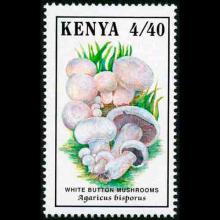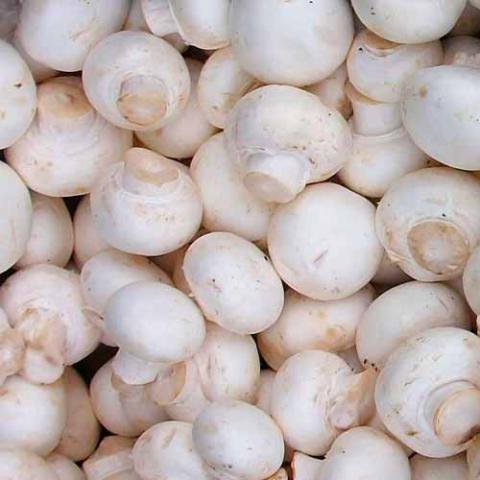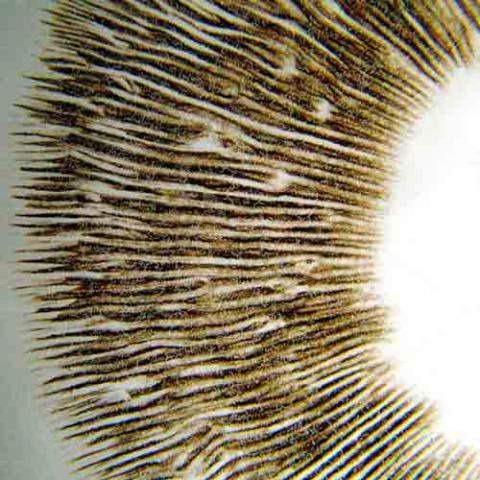NAMES
TAXONOMY
FUNGI ID
THERAPEUTIC
Kenya
Issued:
Stamp:
Agaricus bisporus
Kenya
Issued:
Stamp:
Agaricus bisporus
Kenya
Issued:
Stamp:
Agaricus bisporus
Genus-Species (Fungi): Agaricus bisporus
Agaricus bisporus is an edible basidiomycete mushroom native to grasslands in Europe and North America. It has two color states while immature – white and brown – both of which have various names, with additional names for the mature state. A. bisporus is cultivated in more than seventy countries, and is one of the most commonly and widely consumed mushrooms in the world.
Description
The pileus or cap of the original wild species is a pale grey-brown in color, with broad, flat scales on a paler background and fading toward the margins. It is first hemispherical in shape before flattening out with maturity, and 5–10 centimeters (2–4 inches) in diameter. The narrow, crowded gills are free and initially, pink, then red-brown and finally a dark brown with a whitish edge from the cheilocystidia. The cylindrical stipe is up to 6 cm (2 1⁄2 in) tall by 1–2 cm (1⁄2–3⁄4 in) wide and bears a thick and narrow ring, which may be streaked on the upper side. The firm flesh is white, although stains a pale pinkish-red on bruising. The spore print is dark brown. The spores are oval to round and measure approximately 4.5–5.5 μm × 5–7.5 μm, and the basidia usually two-spored, although two-tetrasporic varieties have been described from the Mojave Desert and the Mediterranean, with predominantly heterothallic and homothallic lifestyles, respectively.
This mushroom is commonly found worldwide in fields and grassy areas following rain, from late spring through to autumn, especially in association with manure. In many parts of the world it is widely collected and eaten; however, resemblance to deadly or poisonous lookalikes should be noted.
Cultivation History
The earliest scientific description of the commercial cultivation of A. bisporus was made by French botanist Joseph Pitton de Tournefort in 1707. French agriculturist Olivier de Serres noted that transplanting mushroom mycelia would lead to the propagation of more mushrooms.
Originally, cultivation was unreliable as mushroom growers would watch for good flushes of mushrooms in fields before digging up the mycelium and replanting them in beds of composted manure or inoculating 'bricks' of compressed litter, loam, and manure. Spawn collected this way contained pathogens and crops commonly would be infected or not grow at all. In 1893, sterilized, or pure culture, spawn was discovered and produced by the Pasteur Institute in Paris, for cultivation on composted horse manure.
Modern commercial varieties of the common agaricus mushroom originally were light brown in color. The white mushroom was discovered in 1925 growing among a bed of brown mushrooms at the Keystone Mushroom Farm in Coatesville, Pennsylvania. Louis Ferdinand Lambert, the farm's owner and a mycologist by training, brought the white mushroom back to his laboratory. As with the reception of white bread, it was seen as a more attractive food item and became grown and distributed. Similar to the commercial development history of the navel orange and Red Delicious apple, cultures were grown from the mutant individuals, and most of the cream-colored store mushrooms marketed today are products of this 1925 chance natural mutation.
A. bisporus is now cultivated in at least seventy countries throughout the world. Global production in the early 1990s was reported to be more than 1.4 billion kilograms (1.5 million short tons), worth more than US$2 billion. In the U.S., the white button form of A. bisporus alone accounts for about 90% of mushrooms sold.
Reference: Wikipedia




